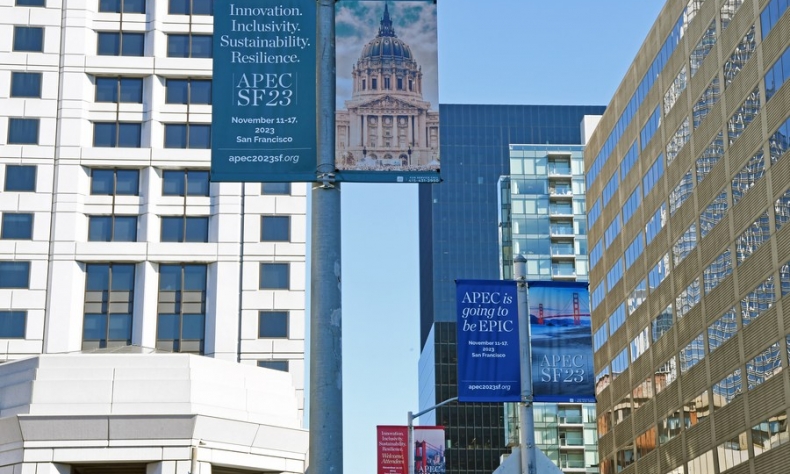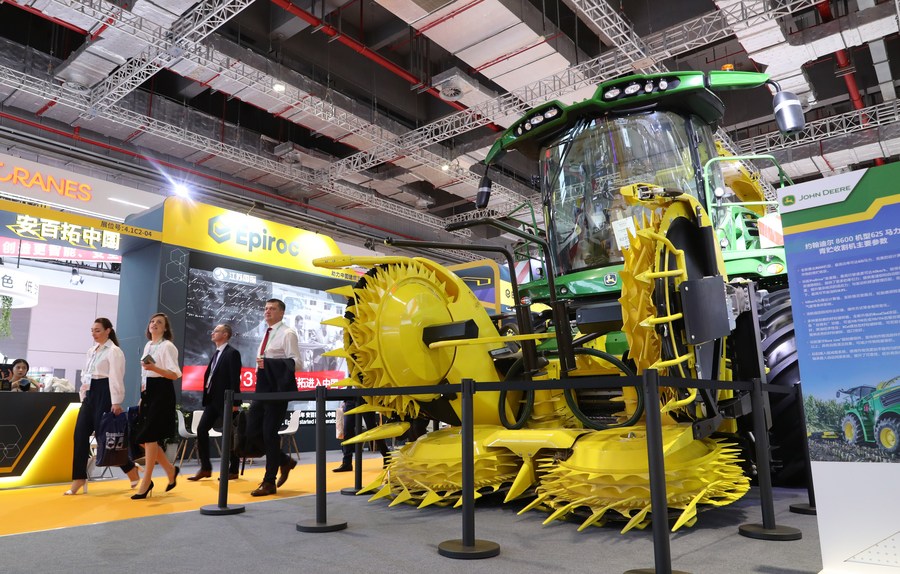From Competition to Constructive Cooperation, No China Threat but China Opportunity

Without a doubt, President Xi’s San Francisco trip has stabilized China-U.S. ties and injected new impetus into Asia-Pacific cooperation. Before the meetings, a poster promised that ‘APEC is going to be EPIC.’ And it has.
“The world is big enough to accommodate both countries” made headlines worldwide after Chinese President Xi Jinping said it at his meeting with U.S. President Joe Biden in San Francisco on November 15 to drive home the point that competition between two major countries like China and the United States cannot solve their or global problems.
The sentiment, besides becoming the talking point of the global media, also reflects how people worldwide want the bilateral relations between the two biggest economies to proceed.
The Xinhua News Agency reported that the meeting was “positive, comprehensive and constructive, and has charted the course for improving and developing China-U.S. relations.” The two leaders agreed to strengthen dialogue and exchange in fields including AI, climate change, military, counternarcotics cooperation, education, culture, sports and economy.
This echoes the general opinion of Americans as well. In a Xinhua video titled “How U.S. residents see China-America ties” released on the day before the summit, a San Francisco resident said, “I expect better relations. I think there’s a lot of mistrust between the two countries, and I hope they can resolve it for the good of the nations, and for the Chinese people and the U.S. population.”
On November 15, at a welcome dinner in San Francisco hosted by friendly organizations in the U.S. for President Xi, Tesla and SpaceX CEO Elon Musk told reporters, “I hope China and the United States can work together for regional prosperity of the world.”
Many American scholars also share the mood. “We don’t have any other choice but to cooperate … Globalization is here to stay… So to resist it is sort of short-sighted, and it’s not sustainable,” Dawn Nakagawa, Executive Vice President of the California-based think tank Berggruen Institute, told the media.
For China and the United States, “one country’s success is an opportunity for the other,” Xi said during the summit. The recently concluded China International Import Expo (CIIE) in Shanghai is a shining example of that. It saw the debut of the U.S. Food and Agriculture Pavilion, marking the United States’ first official participation in the annual import fair.
More than 200 U.S. exhibitors from sectors ranging from semiconductors, medical devices and new energy vehicles to cosmetics, attended the CIIE, the largest U.S. presence in its history since its inception in 2018. According to data from the American Chamber of Commerce in Shanghai, American exhibitors signed orders worth US $505 million at the CIIE. China’s enormous market promises huge development potential for U.S. companies.

“Trade between the United States and China is conducive to the economies of both sides and bilateral relations. It can help commerce between the two countries, it helps create economic benefits for both countries, and it’s also important for cultural engagement and strengthening of national ties, so many opportunities,” Jason Hafemeister, acting deputy under-secretary for Trade and Foreign Agricultural Affairs at the U.S. Department of Agriculture, said at the 6th CIIE.
Currently, China is the largest market for U.S. agricultural exports, taking up nearly one-fifth of the total. It is also the biggest buyer of American corn, cotton, hay and soybean. Half of American soybean exports are sold to China.
Recent happenings prove that a zero-sum mentality can only drag the world into a vertex of turmoil and division. The White House has been imposing restrictions lately on the sale of chips and other high technology to China, which has made American chip firms incur financial losses and lose their global competitiveness. Meanwhile, as Chinese domestic chip companies continue to grow, the country’s self-sufficiency in chip production is increasing. The U.S. crackdown on China in this field is actually precipitating China’s progress after an initial inconvenience.
The United States regards China as a rival due to a mindset in which hegemony is deeply embedded. It fails to understand China’s domestic and global governance philosophy, which is rooted in over 5,000 thousand years of civilization. History testifies to China’s inherently peaceful nature. Mutual respect, peaceful coexistence and win-win cooperation are the lessons learned from 50 years of China-U.S. relations, President Xi said.
On November 17, Xi addressed the 30th Asia-Pacific Economic Cooperation (APEC) Economic Leaders’ in San Francisco, calling on APEC members to adhere to innovation, openness, and green and inclusive development in regional cooperation in for another “golden 30 years.”
On the sideline of the APEC meeting, President Xi held a series of bilateral meetings with the leaders of some APEC member countries including Mexico, Fiji, Brunei, Japan and Peru. Xi underscored China’s expectations that Asia-Pacific countries will pursue independent development, manage differences, and promote cooperation.
Without a doubt, President Xi’s San Francisco trip has stabilized China-U.S. ties and injected new impetus into Asia-Pacific cooperation. Before the meetings, a poster promised that “APEC is going to be EPIC.” And it has.
 Facebook
Facebook
 Twitter
Twitter
 Linkedin
Linkedin
 Google +
Google +










